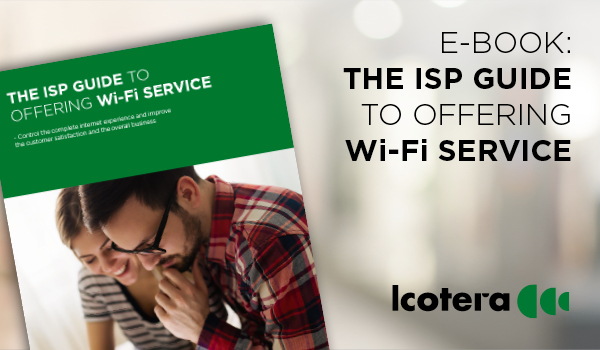What are the dos and don’ts for ISPs delivering Wi-Fi? Here we list 5 common mistakes that ISPs should avoid if they want to deliver seamless in-home Wi-Fi performance to end-consumers – and turn Wi-Fi into a profitable business.
1: Go for the cheapest Customer premise equipment
Admitted, it might be attractive from a cost perspective, but if you are obliged to deliver high-speed internet to end-consumers, a poor-quality router will not do the job; the end-consumer might be buying a 500 or even a 1,000 Mbit connection, yet ends up with speeds of 20-40 Mbit in some areas of the home. High-quality customer premise equipment (CPE) is a prerequisite, if you want to offer best-in-class internet performance.
2: Provide a one-size-fits-all solution
A huge three-floor villa cannot be expected to manage with the same setup as a small dormitory. Instead, you need to offer a customized solution. Size, architecture, construction materials and location, among other factors, all need to be taken into consideration. Most ISPs do know their end-users very well, but it’s a matter of leveraging this knowledge and offering a solution that fits their needs. This also includes the possibility of extending the network with more units that can work seamlessly together.
3: Ask end-users to handle the installation themselves
It might be good for keeping installation costs down in the short term, but it is rarely a profitable approach in the long run. The end-consumers get frustrated when they cannot get the Wi-Fi to work the way they expect, and they are rarely in a position where they can account for all the unknown factors that affect the performance. Often, this means more in-home issues in the long run. But by taking control of the process and conducting the installation yourself, end-users will in general experience better performance and report greater satisfaction with your service. Alternatively, you should at least provide intelligent tools like an installation app to ensure that the end-user installs the router in the right place in the home, guided by you as a provider. And you will recoup the investment over the years to come – when you typically won’t have to touch it again. That’s how installations become a cash cow for your business.
4: Tell end-Users to “turn the router off and on again”.
While being the standard response to many incoming help desk calls, it has rarely solved any in-home performance problems. What’s worse, most end-consumers will have tried this even before they call the ISP’s help desk, only adding to their frustration. ISPs need to take responsibility for providing professional and effective first-class support. Doing so doesn’t necessarily increase support resources or costs, as long as you have a good support setup in place that allows you to monitor in-home performance. In this way, you not only deliver much better customer service, but do it at a lower cost too.
5: Let end-consumers find their way themselves
If the ISP does not clarify that not everything can be solved with a standard box, many end-consumers will understandably take actions themselves to attempt to address the issue of poor in-home performance. Maybe they try looking for an extender that matches the router provided by their ISP. Or try adding a new ecosystem on top of the ISPs. Or pulling cables between floors. For end-consumers, it can be a struggle trying to figure out the best setup for optimizing Wi-Fi in their home. And from the perspective of the ISP, it can be tricky to fix dead ends when end-users have tried solving the issues on their own. When the ISP takes responsibility for the entire delivery, support and counseling, everybody will win.
![]()
If you want to know more about the benefits of offering Wi-Fi or would like advice on how to structure the set-up, feel free to reach out at sales@icotera.com or give us a call at +45 70 10 00 33.
WANT to Deliver an internet experience – or just a box?
By taking control of the complete internet delivery, from the fiber connection to the Wi-Fi service, ISPs can create happy end-consumers having high-performing Wi-Fi with full in-home coverage – and make it a profitable business at the same time.
Learn how in our e-book The ISP Guide to Offering Wi-Fi Service - Find the e-book here

